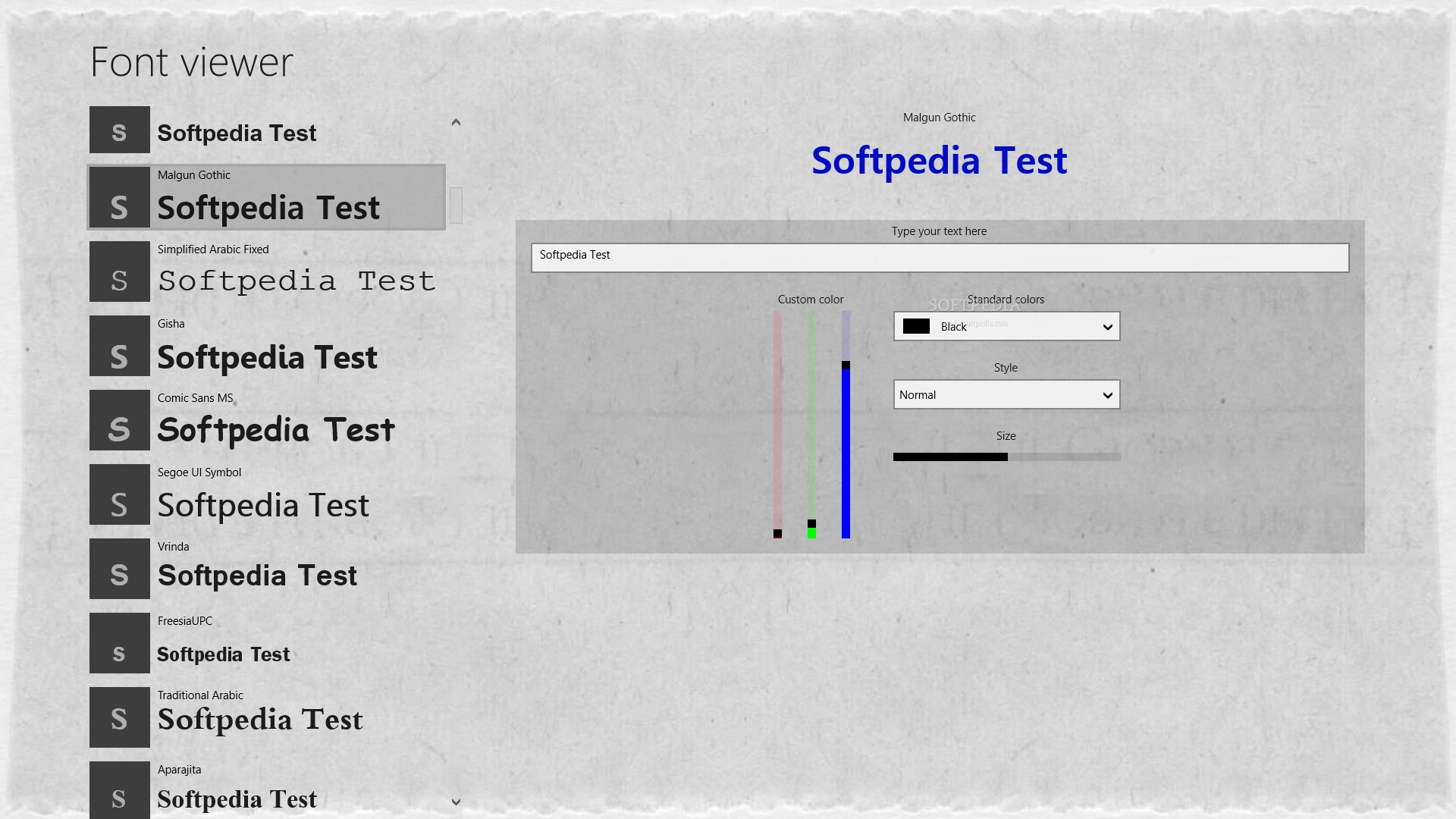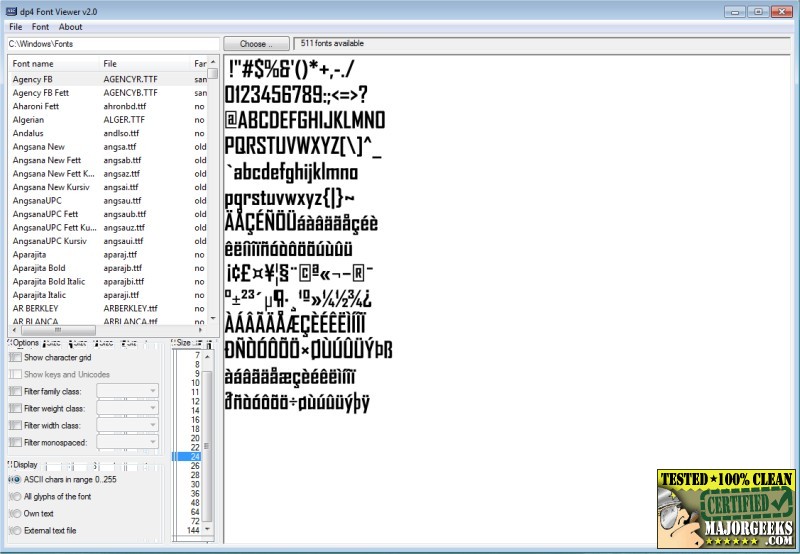
- #VLW FONT VIEWER DRIVERS#
- #VLW FONT VIEWER SOFTWARE#
- #VLW FONT VIEWER PROFESSIONAL#
- #VLW FONT VIEWER WINDOWS#
The inequitable distribution of the economic impact of surgical conditions is further magnified when examined by region: central and southern sub-Saharan Africa are estimated to lose up to 2♵% of GDP in 2030-well more than double the losses that western Europe and north Africa and the Middle East will experience ( figure 3). These losses are expected to rise over time, and they will have the greatest impact on the most vulnerable populations because low-income and lower-middle-income countries are projected to experience losses that are almost 50% greater than high-income countries ( figure 2). The VLO approach, which accounts for market losses during 2015–30, suggests that surgical diseases will result in a cumulative loss of 1♲5% of potential GDP, or $20♷ trillion, for the 128 countries we examined. This study demonstrates that surgical conditions impose a massive and previously unrecognised economic burden on a global scale ( panel). If the reference value of a statistical life is adjusted from the Environmental Protection Agency's Our aggregate estimates are moderately sensitive to variations in the relation between value of a statistical life and income, and assuming otherwise baseline values range between $12♰ trillion and $16♹ trillion ( appendix). Welfare losses secondary to mortality, which are long-run estimates, make up $11♴ trillion of the estimated impact, while the short-run effects of morbidity incurred in 2010 contributed $3♱ trillion in losses ( table 3).

When burden of disease uncertainty was accounted for, the estimates ranged from $8♷ trillion to $22♴ trillion. Our baseline value of a statistical life assumptions suggest that the value of economic welfare losses in 2010 for the countries included in this study were equivalent to 17% of their 2010 GDP, or $14♵ trillion. FindingsĮconomic welfare losses (VLW) do not represent actual losses in GDP, but they can be expressed relative to GDP to provide a sense of scale.

Sensitivity analyses were performed for both approaches. We then used the value of lost welfare (VLW) approach, which is conceptually based on the value of a statistical life and is inclusive of non-market losses, to estimate the present value of long-run welfare losses resulting from mortality and short-run welfare losses resulting from morbidity incurred during 2010. EPIC attempts to model how disease affects a country's projected labour force and capital stock, which in turn are related to losses in economic output, or gross domestic product (GDP). We first used the value of lost output (VLO) approach, based on the WHO's Projecting the Economic Cost of Ill-Health (EPIC) model, to project annual market economy losses due to these surgical diseases during 2015–30. We obtained mortality rate estimates for each disease for the years 20 from the Institute of Health Metrics and Evaluation Global Burden of Disease 2010 study, and estimates of the proportion of the burden of the selected diseases that is surgical from a paper by Shrime and colleagues. The Lancet Regional Health – Western Pacific.The Lancet Regional Health – Southeast Asia.The Lancet Gastroenterology & Hepatology.

#VLW FONT VIEWER PROFESSIONAL#
In this case, the only you can do is to ask for assistance of a professional staff. If the problem with the VLW file has not been solved, it may be due to the fact that in this case there is also another rare problem with the VLW file. If you are sure that all of these reasons do not exist in your case (or have already been eliminated), the VLW file should operate with your programs without any problem.
#VLW FONT VIEWER DRIVERS#
#VLW FONT VIEWER WINDOWS#
Accidental deletion of the description of the VLW from the Windows registry.

#VLW FONT VIEWER SOFTWARE#
The inability to open and operate the VLW file does not necessarily mean that you do not have an appropriate software installed on your computer. Possible problems with the VLW format files


 0 kommentar(er)
0 kommentar(er)
